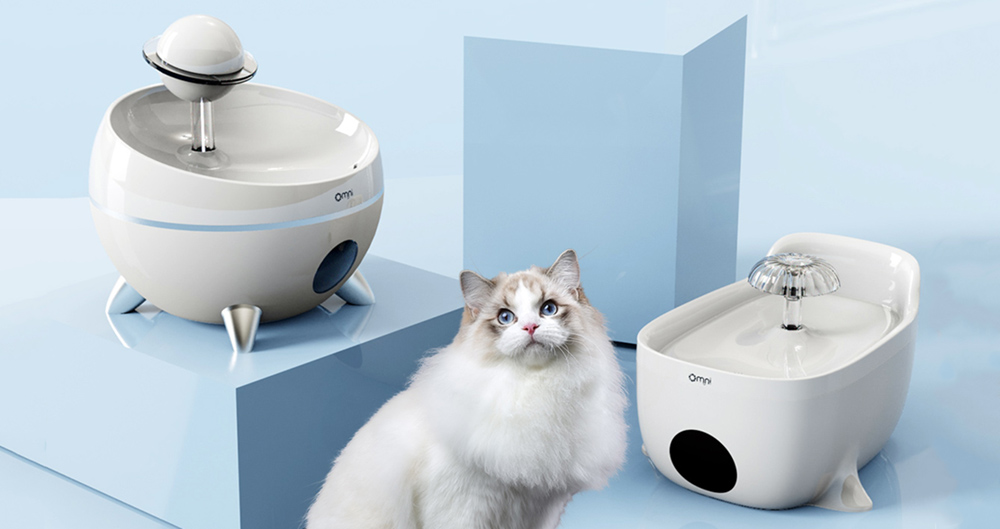What is the slime of the pet fountain inside?
Slippery, greasy stuff can appear on the inside wall of a cute cat water fountain after a period of use, and many people think it is limescale, but it is not. The slime on the inside wall of your cute cat water fountain is usually a "bacterial biofilm". When airborne bacteria attach to the inner walls, they release a thick, gelatinous substance. This gel-like substance can stick to a variety of materials (including plastic, stainless steel and other metals, ceramics and glass). In pet water fountains, bacteria feed on tiny particles deposited into the water from saliva, as well as food particles that fall into the water when a cat or dog drinks. Under the right conditions, they multiply rapidly, so that after a period of time we can see a slippery, greasy layer of slime on the inside of the pet water dispenser.
Bacterial biofilms can be found in spas, sinks, bathrooms, kitchens, downspouts, ponds and any wet environment. Dental plaque on teeth is also a form of biofilm. Biofilm produces a putrid odor that cats are very averse to. This is because a pet's sense of smell is 14 times stronger than that of a human. Also, bacteria in the mucus of the inside of a cute cat water fountain can cause infection when consumed by pets. This is because the bacterial biofilm may contain E. coli and Staphylococcus. This may lead to dental disease, urinary tract infections and kidney disease in pets.
How does the slime on the inside of the pet fountain come about?
Slime on the inside walls of pet cute cat water fountain is produced by bacterial biofilm in the water or by pet saliva. Animal saliva breaks down food particles into sugars so that they can be easily digested and absorbed by the animal. Bacteria also like sugar, and when they are given large amounts of sugar as food, they multiply rapidly. When a pet drinks from a pet water fountain, saliva falls into the water, which is a food source for the bacteria, and slime is produced. The bacterial slime will adhere to the inner walls of the water dispenser and plastic parts. Especially inside the corners and crevices of the cat water fountain pump.

Can purified water prevent slime from being produced of pet water dispensers?
Regardless of the type of water used, the inside walls of pet cute cat water fountain produce slime. The air is full of bacteria. Even if we use purified or filtered water to begin with, pets still bring saliva, bacteria and food particles into the water when they drink it. Bacteria in the air fall into the water and these bacteria feed on the organic matter that falls into the water and then become slime on the inside walls of your dog's water dispenser. It takes two weeks to go from tiny bacteria to slime that is visible to the naked eye.
How to clean the slime from the inside of my pet water dispenser?
The way to ensure that your pet's water dispenser is slime free is to clean it regularly. This way bacteria do not have time to multiply to the point where slime is noticeable. Also changing the water frequently will reduce bacterial growth and also allow your pet to drink healthy fresh water. So many pet dog fountain recommend changing the water once every 2 to 3 days. Disassembly and cleaning once a week. 1-2 months to replace the filter. All pet water fountains circulate water through a pump, and there are small parts, such as the pump, where bacteria can harbor, accumulate and grow. These small parts should also be cleaned carefully. A tutorial on disassembly can be found in this article “How To Disassemble The Pet Smart Water Fountain?”





